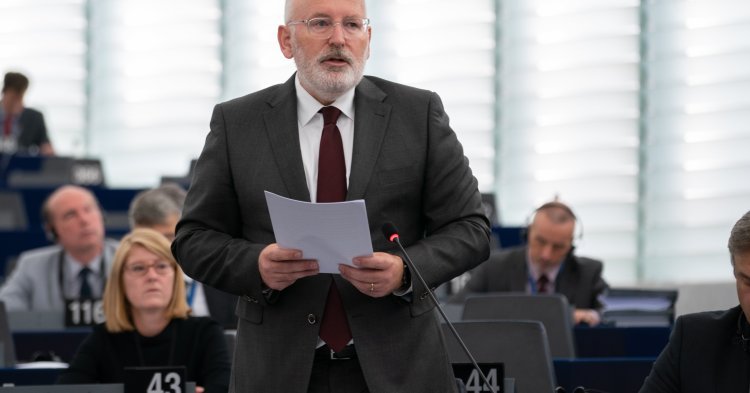Setting this new target for 2030 is part of the European Climate Law package proposed by the European Commission - one of the major steps of a EU Green Deal which has started to materialise since 2019.
The EU Green Deal is a comprehensive plan to ensure the EU cuts its emissions to mitigate climate change. Besides mitigation, it is also aimed at adapting every sector of our economy to this new environmental reality. For example, since our agricultural sector is highly industrialized - with corresponding high emission levels -, the Green New Deal’s ‘farm to fork’ strategy aims at making farming more environmentally friendly, while also improving the livelihoods of European farmers, who can struggle due to low food prices.
The surprising amendment
While still in the process of creating new strategies for sectors such as transport, the Commission first wants to upgrade the previously-set climate targets. For 2020, the emissions reduction target - 20% in respect of 1990 levels - was generously met. For 2030, the proposed 40% reduction was deemed insufficient by the Commission, which proposed a 55% cut. Yet even this was not viewed as sufficient by the Parliament, which tabled an amendment asking for a 60% cut. This strong stance was arguably influenced by NGO pressure, following a recent campaign for a 65% target.
The amendment in question was proposed by the European Parliament’s Committee on the Environment, Public Health and Food Safety (ENVI) on the 11th of September when they adopted the EU Climate Package report. Jytte Guteland, a Swedish social democrat, the Parliament’s rapporteur on the issue, celebrated the 60% target’s narrow passage - 352 votes in favour, 326 votes against -, and called the new target a historic moment and a strong message from the European Parliament.
The aftermath of the vote
Not every MEP was happy with the result. The centre-right European People’s Party (EPP), the largest group in the Parliament, mostly voted against increasing the target, preferring the Commission’s 55% proposal. They were joined in their rejection by the European Conservatives and Reformists group (ECR) and by the far-right Identity and Democracy (ID) group. However, the endorsement the amendment received from the Socialists and Democrats (S&D), the liberal group Renew, the Greens and European Free Alliance group (Greens/EFA), and the European United Left/Nordic Green Left (GUE/GNL) - as well as the unaffiliated Non-Inscrits (NI) group - was enough to get it across the line.
Target feasibility
The Parliament’s position will now be assessed by the Council, where Member States will have to settle for either a 55% or a 60% target. In assessing this, it remains important to evaluate which target is the most feasible - an argument proponents of different targets have made sure to put across. How can all sides make the same argument?
The difficulty with setting intermediate targets is that the Intergovernmental Panel on Climate Change (IPCC), the most authoritative body on the issue, does not set out specific climate pathways for the different continents. This means that whilst we do know what the final target should be (ensuring global warming does not surpass a 2ºC increase), as well as how much the world can still emit before getting there (580 gigatons), there is no conclusive science on the perfect European roadmap. To fill this scientific gap, the European Parliament has also voted for the creation of a European Climate Change Council, which can support future legislative decisions with scientific projections on environmentally just and economically feasible intermediate targets.
It will be interesting to see whether the Council of the EU will dare to be as optimistic as the European Parliament, or whether it will put on its cynical hat and decide the amendment should be disregarded. It is at least expected that this latest vote by the European Parliament will lead to much upheaval in the hallways of the European institutions, both at the Commission - who got more than they bargained for - and at the Council, which have been put in the precarious position of dealing with this more ambitious proposal while their national industries are breathing down their neck.


Follow the comments: |
|
